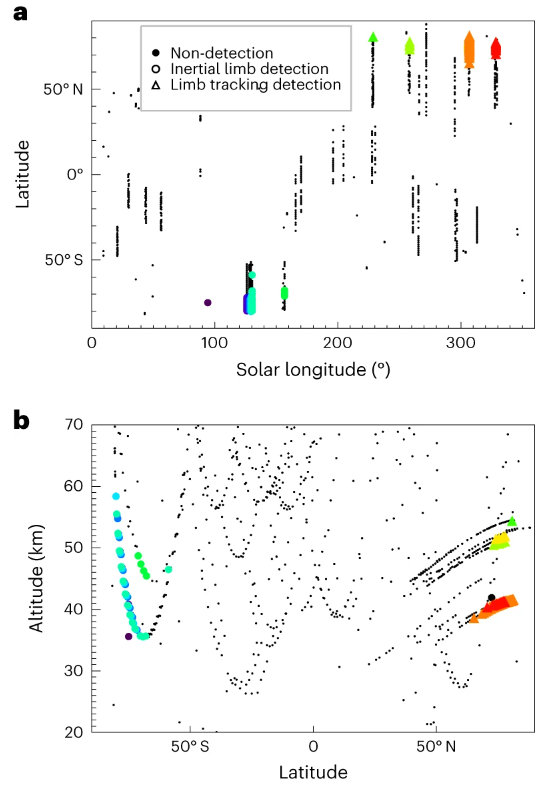Nature Astronomy (2023) https://doi.org/10.1038/s41550-023-02104-8
J.-C. Gérard, L. Soret, I. R. Thomas, B. Ristic, Y. Willame, C. Depiesse, A. C. Vandaele, F. Daerden, B. Hubert, J. P. Mason, M. R. Patel & M. A. López-Valverde
On Mars, atomic oxygen controls the carbon dioxide radiative cooling of the upper atmosphere and the presence of an ozone layer near the poles. To remotely probe meridional transport of O atoms from the summer to the winter hemisphere and the descending flow in the winter polar regions, the O2 Herzberg II atmospheric emission could be used as a proxy. This emission is quite weak on Earth’s nightside, but it is prominent in the Venus night airglow, and it has not previously been observed on Mars. Here we report the limb detection of the O2 Herzberg II visible bands in the Mars nightglow with the NOMAD ultraviolet–visible spectrometer onboard the European Space Agency’s Trace Gas Orbiter. The emission layer reaches up to hundreds of kilorayleighs in the limb viewing geometry. It is mainly located between 40 km and 60 km at high latitudes during the winter season, consistent with three-body recombination of oxygen atoms. This O2 nightglow should be observable from a Martian orbiter as well as from the Martian surface with the naked eye under clear sky conditions. These observations pave the way to future global observations of the Martian atmospheric circulation with simpler lower-cost instrumentation.

a, Latitude and season of the detections. b, Areoid altitude–latitude map of the observations. The triangles indicate limb tracking and the dots indicate inertial pointing orbits. Each dot colour corresponds to one TGO orbit. Small grey dots correspond to observations without a measurable Herzberg II spectral signature.

